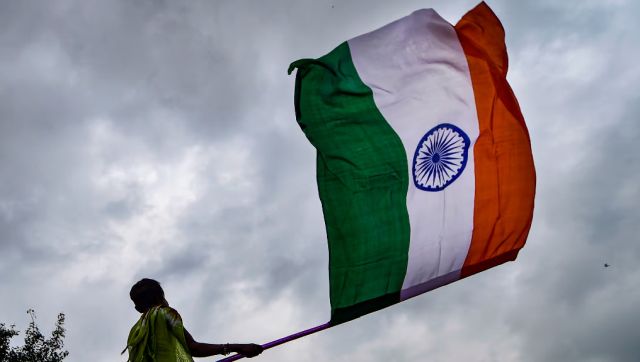Today (26 Janaury), India celebrates its 75th Republic Day with a military parade at the Kartavya Path in Delhi. The march commenced at 10.30 am amid dense fog, marking the day the country adopted its Constitution. President Droupadi Murmu and French president Emmanuel Macron, who is the chief guest, were escorted by the President’s Bodyguard to Kartavya Path. They were joined by Prime Minister Narendra Modi. Murmu then unfurled the national flag, as the 21-gun salute was performed and the national anthem was played. As the celebrations continue, we explain why the national flag is not hoisted on Republic Day. While many may think that hoist and unfurl are synonymous with one other, there is a significant difference between the two. Unfurl or Hoist? On Republic Day, the President unfurls the flag on Kartavya Path before presiding over a parade that showcases India’s military might and cultural diversity. On Independence Day, Prime Minister Narendra Modi hoists the flag to honour the historical event of 15 August 1947. While both may look the same, there are key differences to the ceremonies. On Republic Day, the country celebrates becoming a republic — a day when we adopted the Constitution. On Independence Day, the flag is hoisted as it signifies the rise of a new nation, free from colonial domination. On Independence Day, the flag is hoisted as it signifies the rise of a new nation, free from colonial domination. Whereas on Republic Day, the country celebrates it becoming a republic — a day when we adopted the Constitution. A difference in unfurling and hoisting also lies in the positioning of the flag. When the flag is to be hoisted, it is tied and sits at the bottom of the pole. The prime minister of the country raises the flag up and hoists it with the aim to honour the historical event of the day. On the other hand, when the Tricolour is to be ‘unfurled’ on Republic Day, 26 January, the flag remains closed and tied up at the top of the pole. The President of India unfurls it without pulling it up like it is done on Independence Day. The difference between the two ceremonies is because when India became Republic, it was already independent. Who unfurls and who hoists? The prime minister, who is the head of the government, ‘hoists’ the flag on Independence Day. On the other hand, the President of India ‘unfurls’ the Tricolour on Republic Day as the constitutional head and first citizen of the country. Of course, there is also the matter of history. On the first Independence Day, there was no president. Lord Mountbatten was still the Governor General of India, the position that was equivalent of the president and preceded it before the office was abolished. Obviously, the coloniser couldn’t be responsible for hoisting the flag of a newly independent nation and the job therefore fell to the one person who, it was agreed, would be the representative of the people of India: the prime minister. What about location? Another difference between the two events is also the location. The prime minister hoists the Tricolour from Red Fort, which is followed by his address to the nation. On the other hand, the President unfurls it on Kartavya Path on Republic Day, which is then followed by a massive show of military strength and culture diversity.
Did you know? There are certain rules that need to be followed while handling the national flag. » One has to ensure that the national flag never touches the ground. Even before it is hoisted, while it lays at the bottom of the pole, the flag is kept away from ground level — as a mark of respect to the Tricolour. » The national flag lays at half-mast as a sign of state mourning. The decision to do so lies with the President of India, who also decides the period of such mourning. When the flag is to be flown at half-mast, it must first be raised to the top of the mast and then slowly lowered. » When carrying a flag, it should always be held in the right hand, as this is the position of authority. » When the Indian flag is flown on Indian soil, the rule is that the Tricolour should be the starting point of all flags. When flags are placed in a straight line, the rightmost flag is the Indian flag, followed by other national flags in alphabetical order. When placed in a circle, the Indian flag is the first point and is followed by other flags alphabetically. With inputs from agencies
)